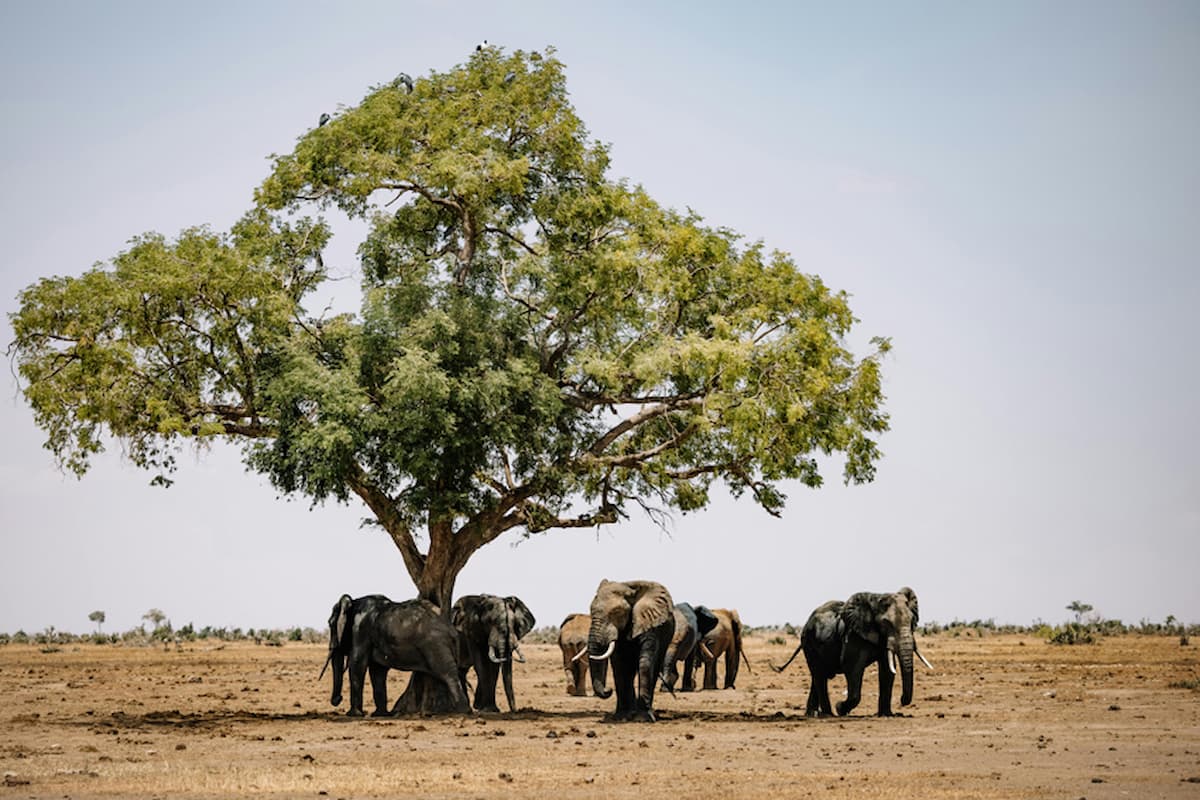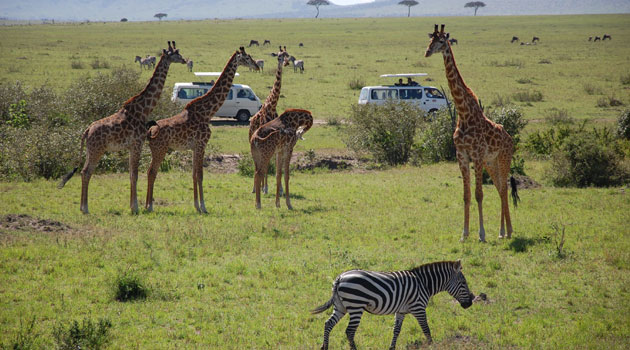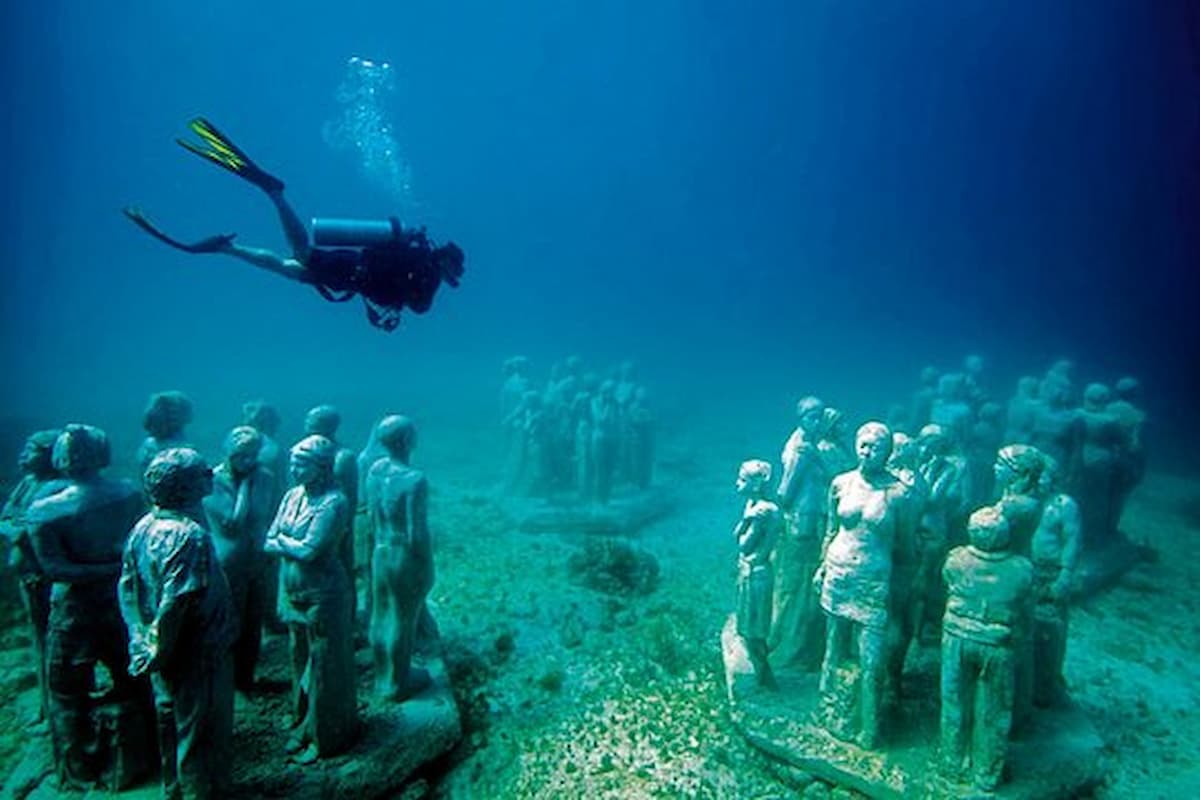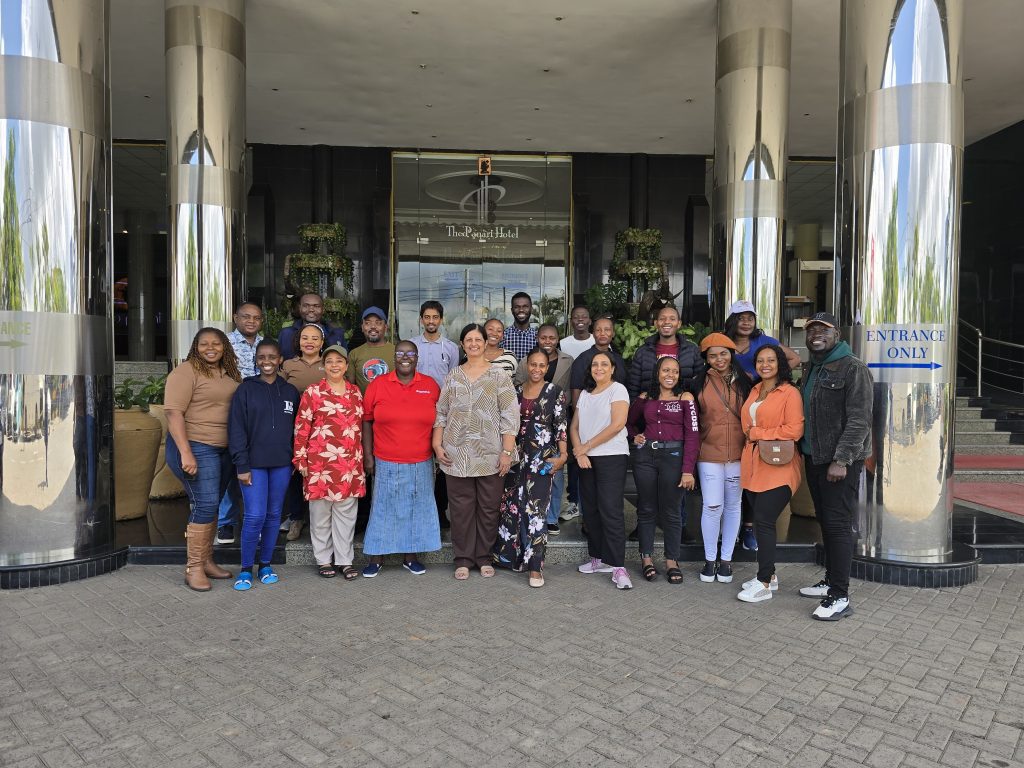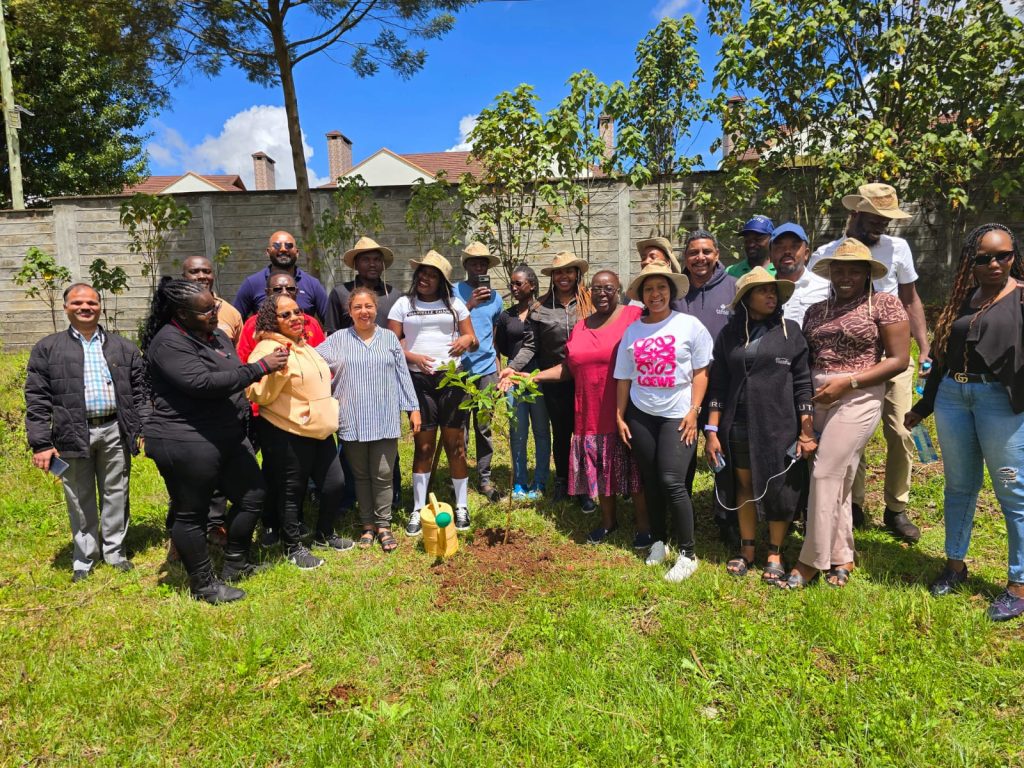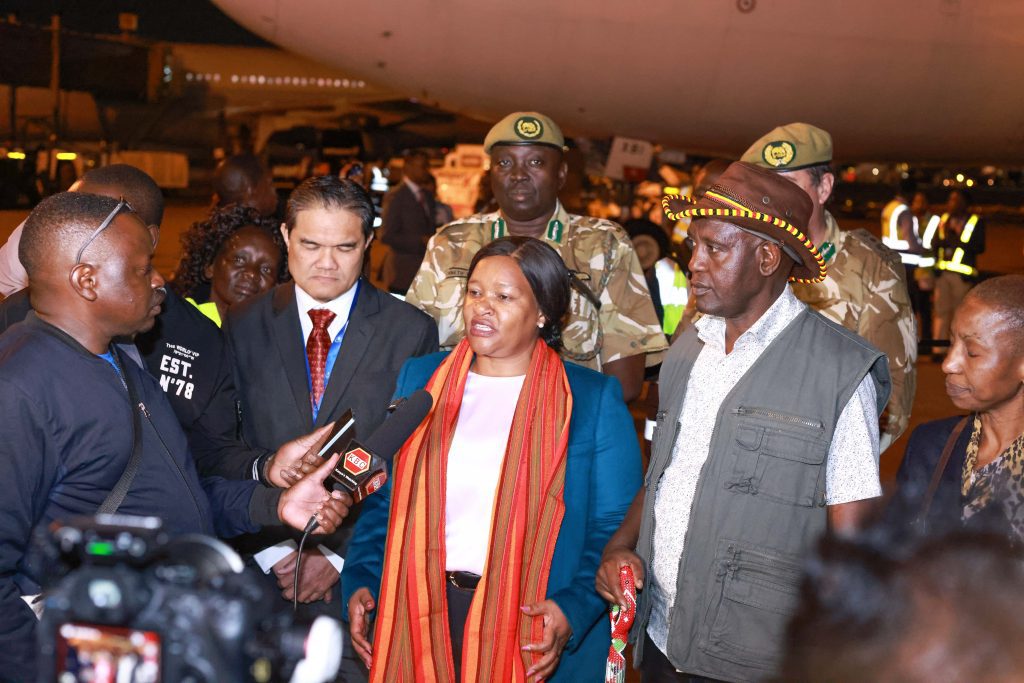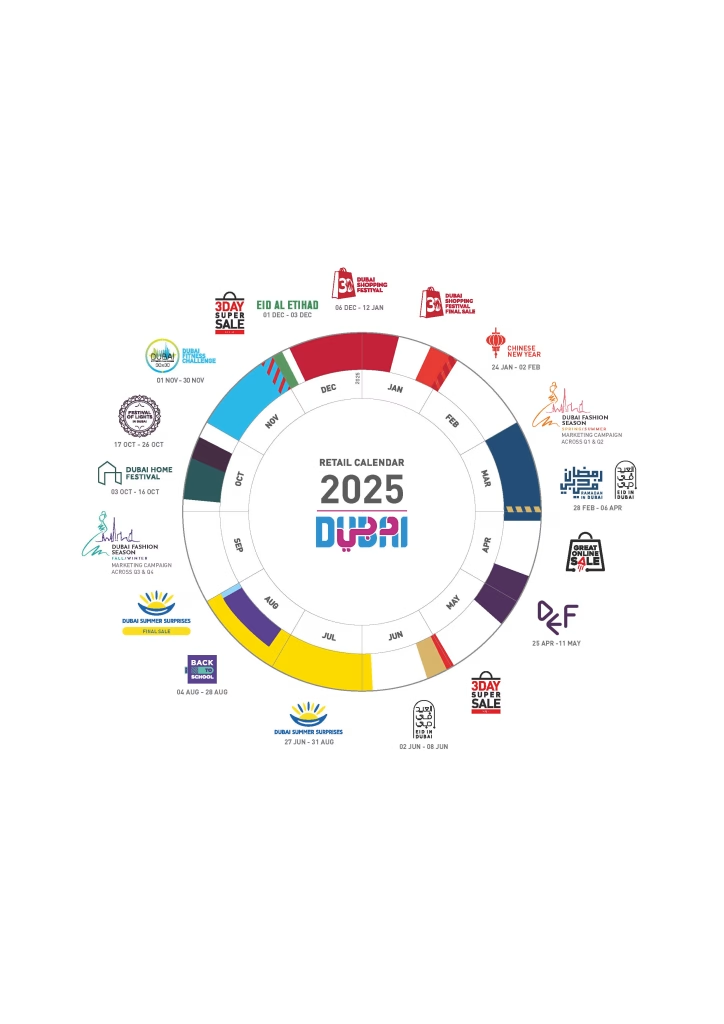
Dubai, United Arab Emirates – Dubai Festivals and Retail Establishment (DFRE), part of the Dubai Department of Economy and Tourism (DET), has unveiled its 2025 Retail Calendar, featuring an incredible line-up of citywide events and activities to further enhance the retail landscape. The 2025 programme of festivals and events promises a continuous celebration of shopping, entertainment, and cultural experiences that will delight all interests, and visitors and residents of all backgrounds.
Aligning with the ambitious goals of the Dubai Economic Agenda, D33, to further consolidate Dubai’s position as a leading global city for business and leisure, and make it the best city to visit, live and work in, the 2025 Retail Calendar programme builds on this vision with 18 unique events. Among them will be: the iconic Dubai Shopping Festival (DSF), the world’s longest-running retail festival; Dubai Summer Surprises (DSS), a great time to visit Dubai providing the ultimate in summer fun with citywide offers; Ramadan in Dubai, a celebration of community and the spirit of togetherness, offering a seasonal backdrop of unique culinary experiences, retail offerings, and events; and Eid in Dubai, an important date in the Islamic calendar and celebrated by Muslims all over the world, with families customarily exchanging gifts and donating to the less fortunate during this time. Each of these events is specifically curated to cater to different preferences with personalised experiences for millions of residents and tourists around the world.
Ahmed Al Khaja, CEO of Dubai Festivals and Retail Establishment (DFRE), said: “Driven by the visionary leadership of His Highness Sheikh Mohammed bin Rashid Al Maktoum, Vice President and Prime Minister of the UAE and Ruler of Dubai, to elevate the city’s position as a global events hub, the 2025 Retail Calendar is structured around a full year of carefully selected seasonal festivals and campaigns. In addition to catering to the interests of our citizens and residents, and reflecting the diverse population of Dubai, the calendar is aligned with the preferences of business travellers and leisure tourists. By enabling Dubai to make the most of the anticipated increase in visitor footfall over the coming year, this approach not only supports the growth of local businesses through essential partnerships with our key stakeholders, but also reinforces Dubai’s appeal as a premier shopping, tourism and entertainment destination, contributing to advancing the goals of the D33 Agenda.”
Returning for its fourth edition, the Dubai Esports and Games Festival (DEF) will take place from 25 April to 11 May 2025. With highlights such as the GameExpo, GameExpo Summit, Dubai Cosplay Championship, and Play Beyond, DEF further reinforces Dubai’s position as a global gaming hub, offering unparalleled gaming experiences, exciting esports tournaments, cutting-edge industry insights, and family fun events. The event features numerous citywide tournaments and activities, including education challenges, with engaging experiences allowing attendees to immerse themselves in various aspects of gaming and learning.
Dubai Fashion Season, a key pillar of the Retail Calendar, will engage fashion enthusiasts year-round. The Spring/Summer collection will be showcased in the first half of 2025, while the Fall/Winter collection will be showcased in the second half, highlighting Dubai’s position as a dynamic fashion hub and the No.1 city of global brands.
With participation from more than 1,000 brands and 4,000 outlets annually, the calendar is the first of its kind, aligning with industry needs and setting the foundation for the region’s retail approach. The calendar is also tailored to appeal to a diverse range of shoppers, providing targeted promotions and personalised shopping experiences that will contribute towards driving footfall and sales.
DUBAI RETAIL CALENDAR 2025
Dubai Shopping Festival
– Date: 6 December 2024 – 12 January 2025
– About: The 30th edition of DSF is showcasing the very best of shopping, family-oriented events and entertainment that the city has to offer during a wonderful winter season, transforming Dubai into a hub of endless excitement and unforgettable adventures. The eagerly anticipated DSF season has kicked off with a stellar line-up of live music, enchanting experiences and extraordinary entertainment. The celebrations continue with only-in-Dubai citywide experiences and exciting events for everyone. For the latest news and announcements from Dubai Shopping Festival, visit www.visitdubai.com/whats-on/dsf and follow in real-time on social media @Dubaifestivals.
Chinese New Year
– Date: 24 January 2025 – 2 February 2025
– About: Grand festivities across Dubai will mark Chinese New Year, with an extensive programme of live entertainment events and exciting offers. Spectacular fireworks, cultural performances, exclusive culinary offerings, and shopping promotions are all part of the annual line-up.
DSF Final Sale
– About: Shoppers will have one last chance to snap up their favourite buys during DSF, with stores and malls around the city gearing up for a final weekend of unbeatable deals. The DSF Final Sale will feature reductions of 25% to 90% at more than 3,000 outlets across Dubai, giving savvy shoppers the ultimate opportunity to snap up the season’s last available items at a bargain. The mega weekend of shopping is also the last chance for mall visitors to enter citywide shopping promotions and raffle draws to win big prizes and take home huge rewards.
Dubai Fashion Season
– Date: Q1 and Q2 2025 (Spring/Summer Collection Launch)
Q3 and Q4 2025 (Fall/Winter Collection Launch)
– About: Dubai Fashion Season positions Dubai as a destination that offers the most up-to-date shopping trends. Consumers have the opportunity to be the first ones in the region to own looks that are fresh ‘off the runway’ for spring and summer, including at some of the city’s world-class malls.
Ramadan and Eid in Dubai
– Date: 28 February 2025 – 6 April 2025
– About: Inspired by the spirit and values of the Holy Month of Ramadan, this cultural initiative encourages local community and visitor participation in the month of reflection and self-discipline, through various activities based on Islamic values, heritage and tradition. Ramadan in Dubai has become an opportunity to promote cross-cultural understanding and offer non-Muslim residents and visitors the opportunity to learn more about the Islamic and Emirati ways of life, at a time when the city comes alive with community events, light art installations, night markets, a vast selection of dining including special menus at Ramadan tents, and incredible retail offers including wonderful gifting ranges for the season. The city remains fully open to welcome everyone across every experience in Dubai, with an added season of festivity that makes the city sparkle.
– Marking the end of Ramadan, the city unites with a sense of generosity and sharing to celebrate Eid Al Fitr. Bright lights and decorations dazzle at every corner, while families and friends come together over delicious feasts. Shop for special sales, book unbeatable staycation packages and experience all the fun of this holiday.
The Great Online Sale
– About: Shoppers should stay tuned for the announcement of a three-day exclusive online shopping event. This highly anticipated sale will feature unbeatable markdowns ranging from 30% to 95% on everything from clothing and luxury beauty products to electronics and more. Keep an eye out for the launch date to make the most of these incredible deals.
Dubai Esports and Games Festival
– Date: 25 April 2025 – 11 May 2025
– About: Enhancing Dubai’s position as a global gaming hub, the Esports and Games Festival features 17 days of action-packed events and activities across the city. Visitors can enjoy gaming experiences, exciting esports tournaments, and cutting-edge industry insights. Exciting education initiatives will kick off in schools starting January 2025, followed by special education days at GameExpo on 7 and 8 May 2025. Dubai’s biggest B2B gaming event, the GameExpo Summit, will take place on 7 and 8 May 2025, followed by the GameExpo event from 9 to 11 May at the Dubai World Trade Centre in Zabeel halls 2 and 3.
3-Day Super Sale (3DSS)
– Date: Edition 1: May 2025; Edition 2: November 2025
– About: Dubai is committed to maintaining its prominent global standing as a premier shopping destination, and one of the initiatives that reinforces this goal is the 3-Day Super Sale. Each edition is held exclusively over one weekend, and is designed to attract shopping enthusiasts and boost tourism by offering reductions ranging from 25% to 90% on a wide range of items, including clothing, shoes, accessories, electronics, furniture, homeware, and even groceries.
Eid in Dubai (Eid Al Adha)
– Date: 2 – 8 June 2025
– About: Eid Al Adha in Dubai is a special time for togetherness, celebration, and the joy of giving. From family-friendly festivities to fantastic deals and offers that capture the spirit of the holiday, Dubai comes alive during Eid. The city offers incredible markdowns at malls, delicious meal deals across restaurants, and dazzling live entertainment, including fireworks and concerts that bring people together. Both residents and visitors can immerse themselves in the city’s rich culture and traditions, making Eid Al Adha a time to connect, share, and embrace traditions.
Dubai Summer Surprises
– Date: 27 June 2025 – 31 August 2025
– About: Discover thousands of offers and fun things to do with Dubai Summer Surprises (DSS). Residents and visitors to the city can expect to find world-class shopping, incredible offers, amazing entertainment and dining, and new and exciting activities throughout the city. Summer is the best time for value in Dubai, with thousands of offers, and surprises that will delight, thrill and excite visitors of all ages. In a city built for all seasons, there is something for everyone to enjoy.
Back To School
– Date: 4 – 28 August 2025
– About: Back to School is an exciting time of year, when parents can share in their children’s enthusiasm for updating school looks and accessories for the new school year. This key shopping period positions Dubai as a great place to do back-to-school shopping, as the city’s retailers offer attractive shopping promotions, especially for the season, and also encourage parents to spend time with their children while teaching them smart shopping habits.
DSS Final Sale
– Date: August 2025
– About: The highly-anticipated DSS Final Sale features further reductions and incredible savings of up to 90% across several leading lifestyle, beauty, electronics and fashion brands across Dubai.
Dubai Home Festival
– Date: 3 – 16 October 2025
– About: This festival provides fantastic savings on a range of home furnishing products, appealing to everyone looking to furnish their homes or upgrade their décor. The homewares segment will be activated through a series of special promotions at home stores across the city. Previous editions have even offered chances to win everything from incredible home make-overs to winning an apartment.
Festival of Lights in Dubai (Diwali)
– Date: 17 – 26 October 2025
– About: The Festival of Lights is a time for reflection, family, and spreading positivity. The festival is a period for gift-giving, with many of Dubai’s top retailers offering exciting shopping promotions on gold and jewellery, bridal wear, fashion accessories, and home décor. The shopping malls and entertainment destinations put on a series of festive-themed events and activities that light up the city. It’s also a wonderful time to visit Dubai, especially for those on stopovers or looking to experience the city’s vibrant culture and rich gastronomy.
Dubai Fitness Challenge
– Date: 1 – 30 November 2025
– About: The Dubai Fitness Challenge is a citywide movement promoting a healthier, more active lifestyle for all. Friends, families, visitors, colleagues, and communities commit themselves to 30 minutes of exercise for 30 consecutive days. It features an action-packed public engagement programme aimed at all ages and fitness levels, including fitness events, classes, and sporting activities, plus exciting deals and promotions across a wide range of retail, sports, and fitness providers, and healthy F&B concepts. Dubai Fitness Challenge’s flagship events include Dubai Run, Dubai Ride and Dubai Stand Up Paddle, all providing participants with unique Dubai fitness experiences in iconic locations.
Eid Al Etihad Celebrations (UAE National Day)
– Date: 1 – 3 December 2025
– About: A tribute to the formation of the UAE, its unity and continued growth, the Eid Al Etihad celebrations consist of three days of festivities, including special retail promotions, fireworks displays, and activations all over Dubai, to honour the nation and its people.
Visit @DubaiFestivals on social media channels for more information.
– ENDS –
About Dubai Department of Economy and Tourism (DET)
With the ultimate vision of making Dubai the world’s leading commercial centre, investment hub and tourism destination, Dubai Department of Economy and Tourism (DET) is mandated to support the Government in positioning the emirate as a major hub for global economy and tourism, and in boosting the city’s economic and tourism competitiveness indicators, in line with the goals of the Dubai Economic Agenda, D33, which aims to double the size of the emirate’s economy and consolidate its position among the top three global cities over the next decade.
Under this remit, DET is driving efforts to further enhance Dubai’s diversified, innovative service-based economy to attract top global talent, deliver a world-class business environment and accelerate productivity growth. Additionally, DET is supporting Dubai’s vision to become the world’s best city to visit, live and work in by promoting its diverse destination proposition, unique lifestyle and outstanding quality of life, overall.
DET is the principal authority for planning, supervising, developing and marketing Dubai’s business and tourism sectors. It is also responsible for licensing and classifying all types of businesses, including hotels, tour operators and travel agents. DET’s portfolio includes Dubai Economic Development Corporation (DEDC), Dubai Business Registration and Licensing Corporation (DBLC), Dubai Corporation for Consumer Protection and Fair Trade (DCCPFT), Dubai SME, Dubai Corporation for Tourism and Commerce Marketing (DCTCM), Dubai Festivals and Retail Establishment (DFRE) and Dubai College of Tourism (DCT).
About Dubai Festivals and Retail Establishment (DFRE)
Dubai Festivals and Retail Establishment (DFRE), an agency of Dubai Department of Economy and Tourism (DET), is responsible for developing Dubai’s retail and festival sectors and supporting the city’s positioning as a world-class tourism destination with year-round family entertainment, shopping, and events.
Source: Dubai DET


